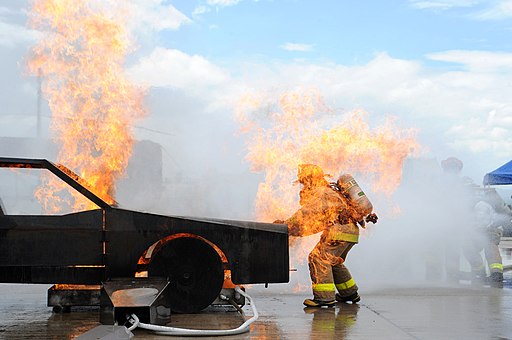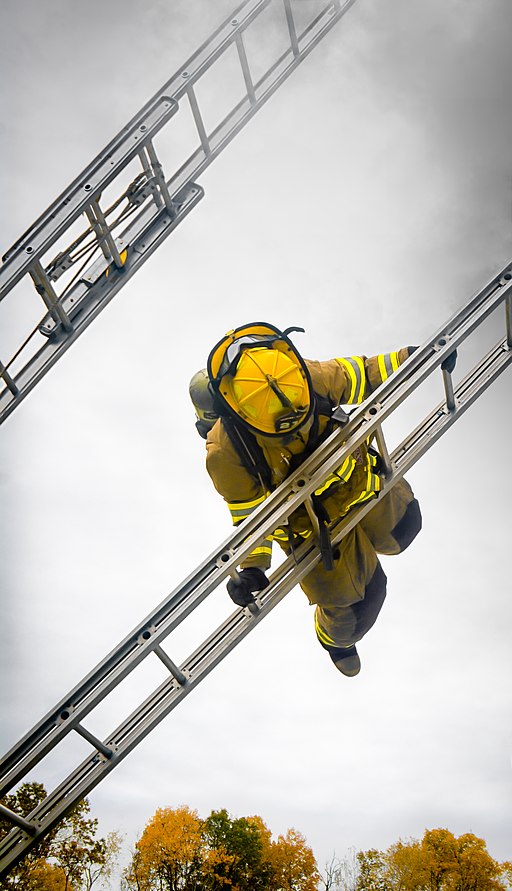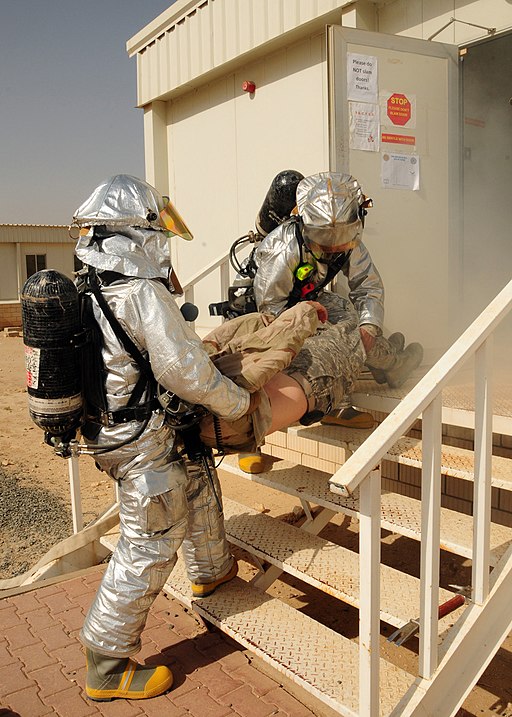Firefighters are responsible for responding to various emergencies and performing demanding daily tasks. Whether carrying heavy equipment or breaking down doors, their physical strength and endurance are keys to a successful operation.
To be fully prepared, firefighters must undergo robust and rigorous physical training. They must maintain a high level of physical conditioning and engage in regular exercises that build strength and endurance.
In this blog, we will explore the physical demands of firefighting and discuss the importance of being in good physical condition for the job. Whether you are a seasoned firefighter or just starting, these insights can help you prepare for the physical challenges of the job.

US Air Force Senior Airman Christopher Crusius fearlessly battles a simulated car fire as part of the CENTAM SMOKE exercise, training alongside partner nation firefighters at Soto Cano Air Base in Honduras.
The Physical Demands of Firefighting
Firefighters perform different physical tasks that require strength and endurance to respond effectively and safely to fires. These duties include carrying equipment, breaking down doors, climbing ladders, and engaging in other strenuous activities. Firefighters must be able to perform such tasks quickly and efficiently while operating under extreme conditions.
The demands placed on a firefighter’s body can be quite punishing. A firefighter must remain alert and physically prepared in order to respond properly during an emergency situation.
Firefighters must also condition their bodies for endurance activities. Knowing how to move your body correctly is equally important as having physical strength when performing certain firefighting duties.
For example, when firefighters move and carry ladders, they should maintain good posture and body alignment so as not to strain the back or cause any long-term damage due to improper movements over time. This knowledge comes from learning correct techniques and practicing them diligently until they become second nature in stressful situations.
Candidate Physical Ability Test
The candidate physical ability test (CPAT) is a standardized test used to evaluate the physical fitness of an aspiring firefighter. It is designed to simulate the physical demands of firefighting.
The CPAT consists of eight events that candidates must complete within a set time limit. These events include the following:
- Stair climb
Candidates must carry a 45-pound hose pack up a flight of stairs as quickly as possible. - Hose drag
Candidates must drag a charged hose as quickly as possible across a certain distance. - Equipment carry
Candidates must carry various equipment, such as a ladder, a saw, and a hose, across a certain distance. - Ladder raise and extension
Candidates must raise and extend a ladder as quickly as possible.

Braving the heat and danger, a firefighter slides down the ladder to safety.
Jess Mann, CC BY-SA 4.0, via Wikimedia Commons
5. Forcible entry
Candidates must use a simulated hydraulic ram to break down a door.
6. Search
Candidates must crawl through a simulated smoke-filled room and locate a simulated victim, potentially in an enclosed space such as a small crawlway or tunnel.
This event simulates searching for victims in low visibility conditions, a typical task firefighters may encounter on the job.
7. Rescue
Candidates must drag a simulated victim to safety.

Firefighters remove a simulated victim using the two-man fore-and-aft carry during a training exercise at an air base in Southwest Asia.
8. Ceiling breach and pull
Candidates must use a simulated ceiling breach tool to cut through a simulated ceiling and pull a simulated victim to safety.
A certified testing agency typically administers the CPAT. Candidates have to do the test within a particular time and pass all eight events to pass the test. The CPAT is just one aspect of the physical training firefighters must undergo to prepare for the job.
Physical Conditioning for Firefighters
To ensure they are in peak physical condition, firefighters must engage in regular exercises that target both the muscles and the cardiovascular system.
What is the physical training for a firefighter?
Firefighters perform warm-up exercises before engaging in more intense physical training. Some examples of warm-up activities for firefighters might include light jogging, jumping jacks, or dynamic stretches.
Cardio-based exercises are an important part of firefighter training because they help build the endurance needed to do physically demanding tasks. Running, cycling and swimming are all excellent examples of cardio exercises. Other forms of exercise, such as aerobics classes or interval training, can also be beneficial.

Joint Base Myer-Henderson Hall Firefighter Sam Grossman ensures his safety with a new escape device during a joint training exercise with the Alexandria County Fire Department.
Strength training is also essential for firefighters as it helps them build muscle power and resilience. Exercises like squats, bench presses, pull-ups, and chin ups, are effective at targeting multiple muscle groups simultaneously and promoting good form even when lifting heavy objects.
Functional movement exercises like kettlebell swings, burpees, and medicine ball throws challenge the body in new ways and help develop coordination, agility, balance, stability, and core strength.
Firefighters may also benefit from incorporating foam rolling into their physical conditioning routines. They can help reduce muscle tension and improve their range of motion by using a foam roller to massage their muscles.
Step ups are a type of lower body exercise involving stepping onto a platform or bench with one foot and returning to the starting position. They can be a good way for firefighters to build leg strength and endurance.
In addition to incorporating these various exercises into their fitness routine, firefighters should also focus on proper nutrition to fuel their bodies during intense activity. A balanced diet with plenty of fruits and vegetables combined with adequate hydration is essential for overall health and well-being both on-the-job and off-duty.
Combining different exercises with healthy eating habits gives them the physical endurance needed to excel at their job.
Staying Motivated and Committed
Since firefighters must be physically fit and prepared to handle high-intensity situations, staying motivated enough to consistently train can be challenging. It’s important that any firefighter in training learn strategies that will help them stay focused and committed to their training goals.
If you want to stay motivated, it can help to find someone to train with who has the same goals as you. Training with a group can make you more accountable and give you support. You can also make exercise more fun by competing with others in a friendly way.
Another helpful strategy for maintaining motivation is setting achievable yet challenging goals, such as completing a certain number of reps or running a certain distance in a specified amount of time.
Tracking this progress can also help in providing the motivation needed to keep pushing forward. Seeing the gradual improvements from one day to the next can encourage continued effort and dedication toward achieving long-term goals.
While all of these strategies can be helpful in terms of keeping up motivation during physical training, it’s important to remember why you are doing it in the first place, which is being able to physically handle the demands of being a firefighter without putting yourself at risk. Consistent commitment to training is essential even when times get tough, or progress feels slow.
To be prepared for the physically demanding nature of firefighting, all aspiring firefighters must adhere to a regular training program that focuses on improving their overall physical fitness.


